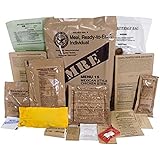The Importance of Having a Clear Evacuation Route
Mapping Out Your Route
Let me tell you, the first step when you think about an evacuation is to know where you’re going. If you’ve ever found yourself in a stressful situation, you know that panic can set in fast. Without a clear evacuation route, confusion can become your worst enemy. It’s essential to map out your escape paths ahead of time so that when the moment arises, you’re ready to roll.
As someone who values preparedness, I’ve found that not just having one route is critical. There should be alternate paths, in case of blockages or hazards. Trust me, being flexible is a game-changer during emergencies. Sketch out routes from different locations in your home, work, or wherever your life may take you.
And don’t forget: share your routes with family or housemates. Communication is key. Once everyone knows where to go, there’s less chance of someone going the wrong way – or worse, freezing up in the moment. Having clarity in these situations is empowering, making it easier to focus on what truly matters: getting to safety.
Understanding Potential Emergencies
Assessing Risks in Your Area
Now, let’s talk about understanding the specific emergencies that could impact you. Not all regions face the same risks; some might be prone to earthquakes, while others could be in flood zones. Knowing what potential emergencies could occur where you live will allow you to tailor your plan accordingly.
For me, taking time to research local risks was eye-opening. I didn’t just guess – I looked up statistics and past events. I discovered that living near the coast meant being ready for hurricanes, while my friend in the mountains had to consider wildfires. Knowing these risks helps you prepare mentally and physically for specific scenarios.
And let’s not forget that emergencies can happen quickly. By being informed, you’re not just playing the “what if” game – you’re ready to tackle real threats. Each little piece of information can help shape your evacuation plan and help keep your loved ones safe.
Preparing an Emergency Kit
What Should Be in Your Kit?
Alright, here’s where the rubber meets the road: preparing an emergency kit. You never want to be caught in an evacuation without the essentials. Humor me and think about what you’d need if you had to leave in a hurry. Food, water, medications, those are just the start.
When I was putting together my kit, I realized how crucial it is to think beyond basic supplies. You’ll want a flashlight, batteries, a first-aid kit, and personal documents like IDs and insurance policies. These small details can make a huge difference when you’re scrambling to leave.
== > What if ... Get a FREE Subscription to PREPARE
Oh, and don’t forget about your furry friends if you have pets! Their food, leashes, and any medication should also be a part of the kit. It’s about making sure everyone can get out safely and comfortably. So take the time to assemble your kit; it’s worth every minute.
Communicating with Family and Friends
Establishing Communication Protocols
Here’s another vital aspect of your emergency plan: communication. When chaos erupts, the last thing you want is to be body-checked into confusion regarding where your loved ones are. Establishing communication protocols ahead of time is a game-changer.
As I’ve learned, it’s not just texting and calling. Make a plan for how your family will communicate if you’re separated. Maybe choose a specific meeting spot that’s easy for everyone to remember. Knowing that everyone’s on the same page can make the process less harrowing when the clock is ticking.
Having a designated contact outside of your immediate area can also be a smart move. That person can help relay messages and keep everyone in the loop if local communications get jammed. Nothing beats having a reliable system in place when lives and safety are at stake.
Practicing Your Evacuation Plan
Importance of Drills
Finally, let’s chat about practicing your plan. It might sound a bit dramatic, but actually running through an evacuation drill can do wonders for your confidence and readiness. I’ve done it, and let me tell you: it’s an eye-opener!
By simulating the evacuation process, you can identify any weaknesses or confusion in your plan. Do some routes take too long? Is there a quirky obstacle that no one thought about? When you practice, these issues come to light, making you better prepared for real situations.
Plus, including everyone in your household in the drills helps reduce panic when the real thing happens. By familiarizing themselves with the plan and expected behaviors during emergencies, everyone can respond calmly and confidently. Just remember, practice makes perfect – and in emergencies, perfect is what you need.
FAQ
1. Why is an emergency evacuation plan necessary?
An emergency evacuation plan is necessary to help people respond quickly and effectively in crises. It reduces confusion, ensures everyone knows where to go, and increases safety during emergencies.
2. What should I include in my emergency kit?
Your emergency kit should include water, non-perishable food, medications, a flashlight, batteries, a first-aid kit, personal identification, and pet supplies if needed. Tailor the kit to your specific needs.
3. How often should I practice my evacuation plan?
It’s wise to practice your evacuation plan at least once or twice a year. This keeps everyone familiar with the procedure and helps identify any issues that may arise.
4. What are some common mistakes people make in evacuation planning?
Common mistakes include not mapping out multiple routes, forgetting essential supplies, failing to communicate with family members, and not practicing the plan regularly. Avoiding these pitfalls can save time and stress in emergencies.
5. How can I stay informed about potential local emergencies?
Stay updated on local emergencies by subscribing to local news alerts, following emergency management agencies on social media, and using weather apps that provide emergency notifications. Being informed is key to effective preparedness.






